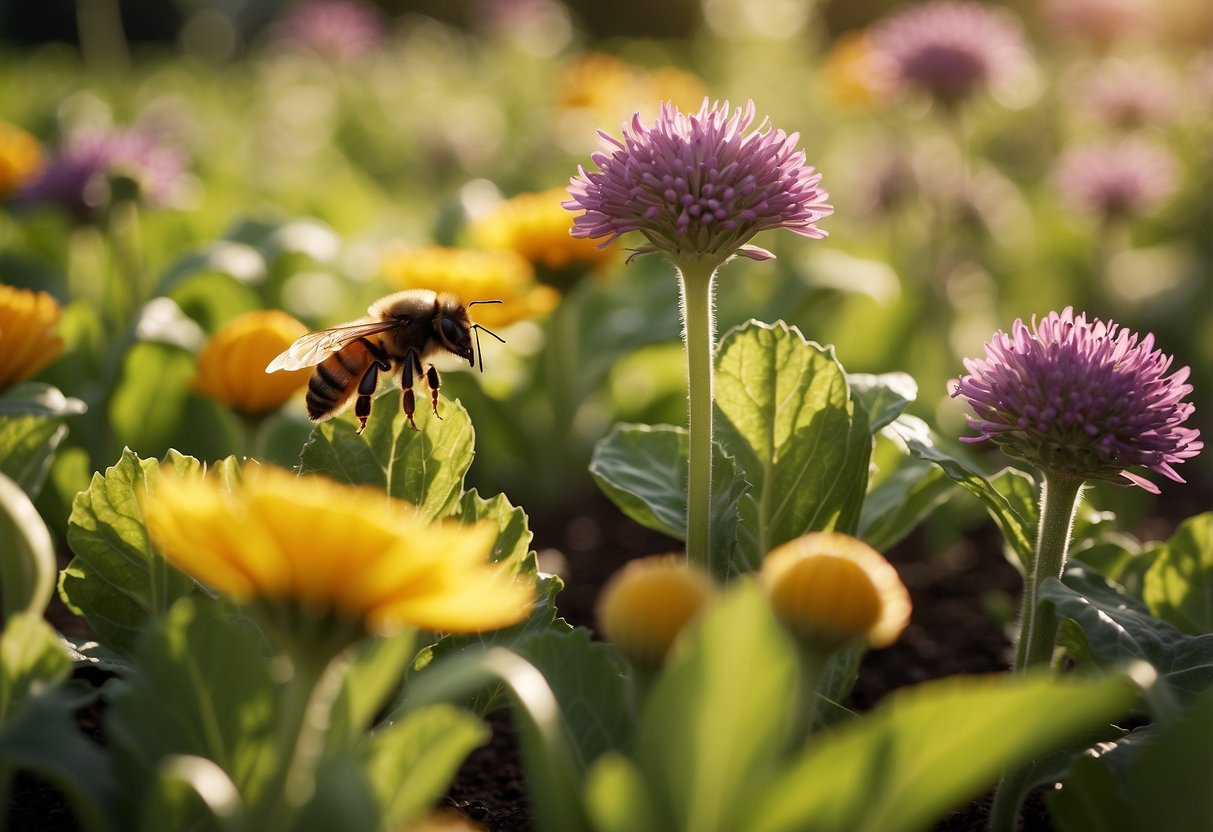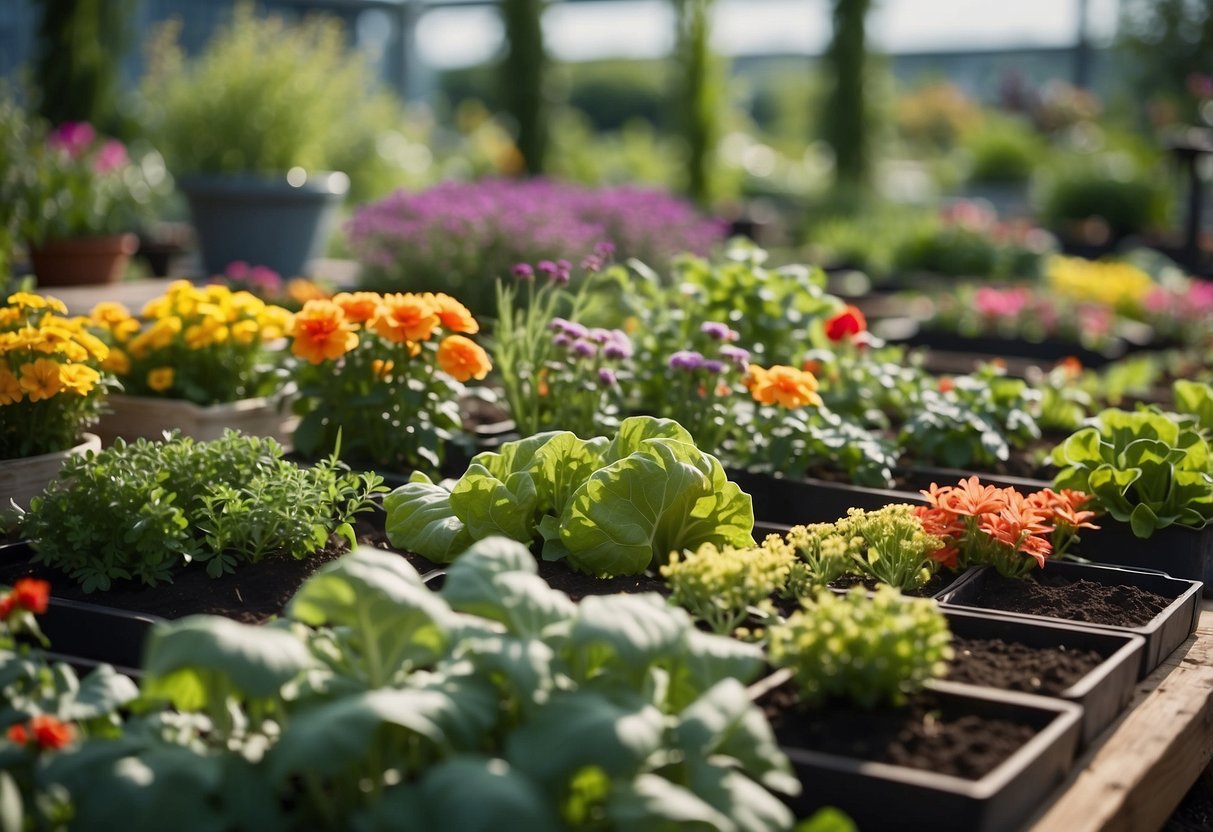Crop Garden Ideas: Creative Ways to Maximize Your Harvest
Gardening can be a rewarding hobby, providing you with fresh vegetables and a sense of accomplishment. With a variety of crop garden ideas, you can make the most of any space you have, whether it’s a sprawling backyard or a small balcony. Doing so not only allows you to enjoy homegrown produce but also contributes to a greener environment.

Exploring different layouts and types of crops can make gardening even more enjoyable. From raised beds to square-foot gardens, there are numerous ways to tailor your garden to your needs and preferences. Whether you’re a seasoned gardener or just starting out, there’s always something new to learn and try.
1) Raised Bed Gardens

Raised bed gardens are perfect for beginners and experienced gardeners. They offer great soil control and better drainage.
You can grow vegetables like tomatoes, cucumbers, and zucchini easily. These plants thrive in raised beds, ensuring a healthy harvest.
Raised beds also make gardening more accessible. You won’t have to bend down as much, making it ideal for people with back problems. For more ideas, check out these raised bed designs.
2) Vertical Gardening

Vertical gardening is a great way to make the most of your space. You can grow more plants by going up instead of out. This method works well for small gardens.
Use trellises to support plants like tomatoes and cucumbers. Other good options include pole beans and peas. These crops grow best when they have something to climb on.
Consider creating a living wall. Secure a trellis panel to a wall and hang pots with herbs, vegetables, and flowers. Painting the panel can make it look even nicer. You’ll be amazed at how much more you can grow vertically.
3) Companion Planting

Companion planting is a fun way to make your garden healthier and more productive. Some plants grow better when they are near certain other plants.
For example, beans are good for the soil because they add nitrogen. You can plant them near corn or carrots.
Tall plants like corn can give shade to smaller plants like lettuce that don’t like too much sun.
Some plants can even keep pests away from your garden. Marigolds, for instance, can repel harmful insects from your vegetables.
Check out these companion planting guides for more tips on pairing plants.
4) Succession Planting

Succession planting is a clever way to maximize your garden’s yield. Instead of planting all your seeds at once, you plant them in intervals. For example, you can plant a row of vegetables every two weeks.
This technique works great for crops like carrots and peas. By doing this, you ensure a steady supply of fresh produce. Plus, your kitchen won’t be overrun with too many vegetables at one time.
Imagine growing fresh crops continuously without a break. It’s easy with succession planting! Check out this guide for more tips.
5) Square Foot Gardening

Square foot gardening is a great way to grow lots of crops in a small space. You use raised beds divided into squares. Each square holds a different type of crop.
This method allows you to plant exactly what you want, where you want it. For example, you can plant 16 radishes in one square foot.
Pick a sunny spot with at least 6-8 hours of sunlight. Make sure the area has good drainage and is easy to water and maintain to ensure healthy growth.
6) Container Gardening

Container gardening is perfect if you lack yard space. It’s easy to manage and flexible. You can grow a variety of vegetables in pots, like tomatoes, lettuce, and radishes.
For instance, a 5-gallon container is great for tomatoes. Small containers work well for herbs and greens. You can even use hanging containers to save space.
Consider colorful and compact plants that add beauty and flavor to your space. For ideas, check out these container garden designs.
7) Hydroponic Systems

Hydroponic systems are a great way to grow plants without soil. They use water and nutrient solutions to support plant growth. These systems can be set up indoors or outdoors, making them flexible for different spaces.
There are different types of hydroponic systems, such as vertical gardens and Dutch bucket systems. Vertical gardens can save space by stacking plants. Dutch bucket systems are simple and perfect for beginners.
You can grow a variety of plants hydroponically. For example, basil flourishes when given plenty of light. It’s also possible to grow other herbs and vegetables efficiently. This method reduces water usage and helps the environment.
8) Polytunnel Growing

Polytunnels are great for extending your growing season. They create a warm and protected environment for your plants.
You can plant a variety of crops in a polytunnel. Sweet potatoes, for instance, thrive well and look beautiful as they grow.
Rotating your crops is important. This helps prevent soil-borne diseases and keeps the soil healthy.
Maintaining your polytunnel is key. Regular cleaning ensures your plants stay healthy and free from pests.
Learn more about polytunnel growing for beginners.
9) Community Gardens

Creating a community garden is a great way to bring people together. It helps in growing fresh produce and builds a sense of community.
Involve local residents, organizations, and businesses to ensure everyone feels a part of the project.
Careful planning is crucial. Think about location, layout, and accessibility. Design specific areas for vegetables, herbs, and flowers to make the garden welcoming for all.
Consider adding a building for meetings and events. This can also serve as a tool bank or lending library for gardening resources. Find more ideas at Treehugger.
10) Winter Crop Gardens

Winter crop gardens can be very rewarding and enjoyable. You can grow many vegetables even when it’s cold outside. Beets, for example, are a great choice because they thrive in insulated soil and can handle temperatures as low as 10°F.
Garlic is another excellent option. If you plant it 4 to 6 weeks before the first ground freeze, it will establish its roots over winter. Kale thrives in the winter cold, tolerating temperatures down to 5°F.
Spinach and arugula are also cold-hardy crops that can provide fresh greens throughout winter. Give winter gardening a try!
Planning Your Crop Garden

To create a thriving crop garden, you need to carefully choose its location and design the layout. These steps ensure your plants get what they need to grow healthy and strong.
Choosing the Right Location
Pick a spot that gets full sun for at least six to eight hours each day. Most vegetables need plenty of sunlight to produce healthy crops. Aim for a location near a water source for easy irrigation and to ensure your plants have a consistent supply of water.
Good drainage is essential for a successful garden. Avoid low-lying areas where water can pool. Test your soil by filling a hole with water; if it drains quickly, it’s suitable.
If possible, select a spot shielded from strong winds. This will protect delicate plants and reduce water loss. Adding a fence or windbreak can also help.
Deciding on the Garden Layout
Start with raised beds if you’re new to gardening. Raised beds, like the four-foot-by-four-foot boxes, simplify gardening and require less weeding. This method is perfect for beginners and can be densely planted for multiple harvests. Learn more from the Old Farmer’s Almanac.
Square Foot Gardening (SFG) is another efficient layout option. By using a grid system, you maximize space and make plant management easier. Place a lattice across the bed to separate each square foot, allowing you to plan and organize crops effectively.
Consider paths between rows or beds to access your plants easily. These paths should be wide enough for you to move comfortably but not take up too much growing space. Consistent planning of your garden layout ensures all plants receive enough light, water, and nutrients.
Soil Preparation and Improvement

Preparing and improving your garden soil is crucial for plant health and high yields. In this section, you’ll learn about the importance of testing soil and adding organic matter.
Testing Your Soil
Testing your soil helps you understand its pH and nutrient content. Start by collecting samples from various parts of your garden. Use a soil testing kit or send samples to a lab for detailed analysis.
Soil pH affects nutrient availability. For most crops, a pH between 6.0 and 7.0 is ideal. If the pH is too low or high, you can adjust it with lime (to raise pH) or sulfur (to lower pH).
Apart from pH, testing tells you what nutrients are missing. Commonly checked nutrients include nitrogen, phosphorus, and potassium. Knowing what your soil lacks allows you to make informed decisions about fertilization.
Adding Compost and Nutrients
Adding compost boosts soil health. Compost adds organic matter, improves structure, and helps soil retain moisture. It also feeds beneficial soil organisms. Compost is made from decomposed organic materials like kitchen scraps and garden waste.
Spread a 2-3 inch layer of compost over your garden beds. Work it into the soil to a depth of about 6-8 inches using a spade or garden fork.
In addition to compost, consider specific nutrients based on your soil test results. Organic options like bone meal (for phosphorus) and blood meal (for nitrogen) are effective. Mixing these into your soil helps provide the right balance of nutrients for healthy plant growth.
Regularly adding compost and keeping an eye on nutrient levels ensures your soil remains fertile and productive year after year.







